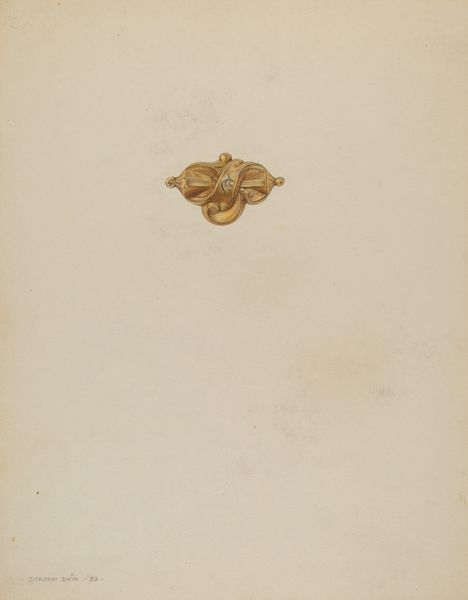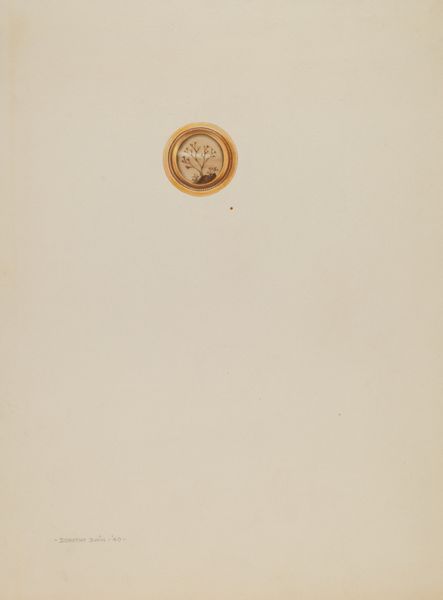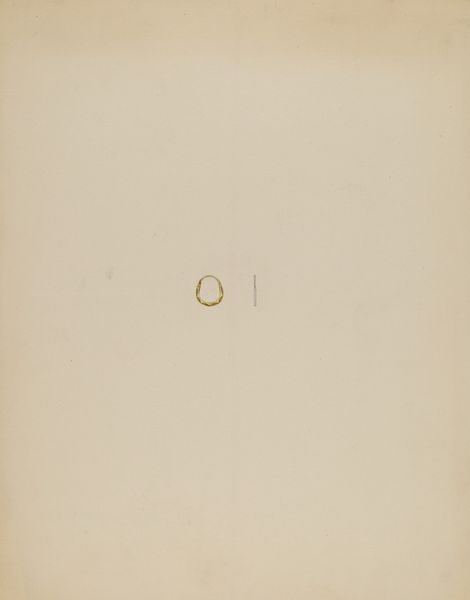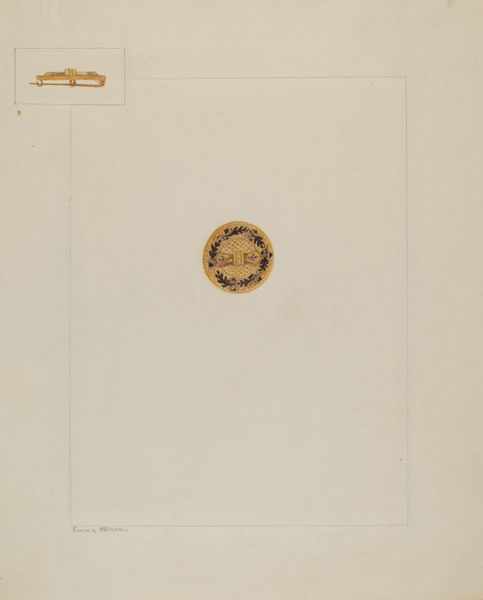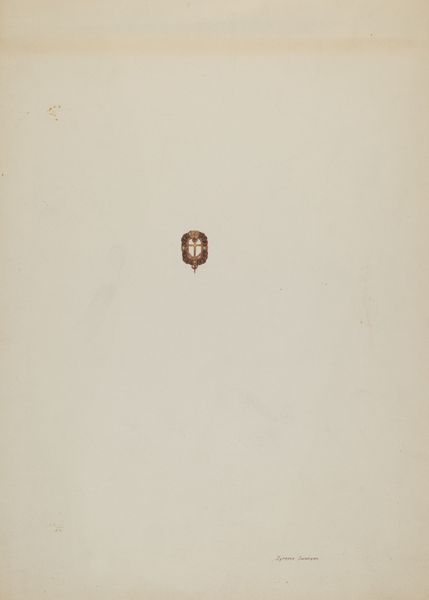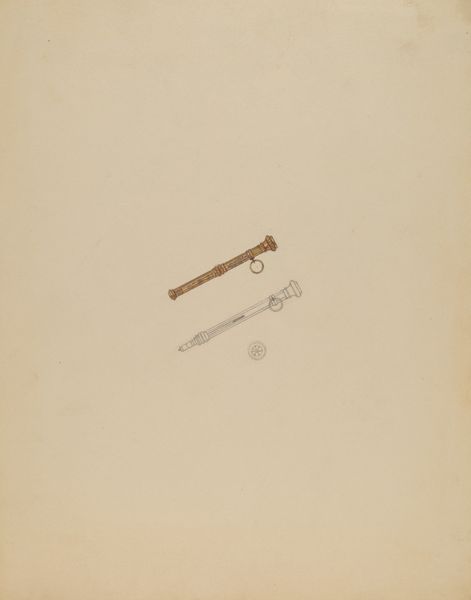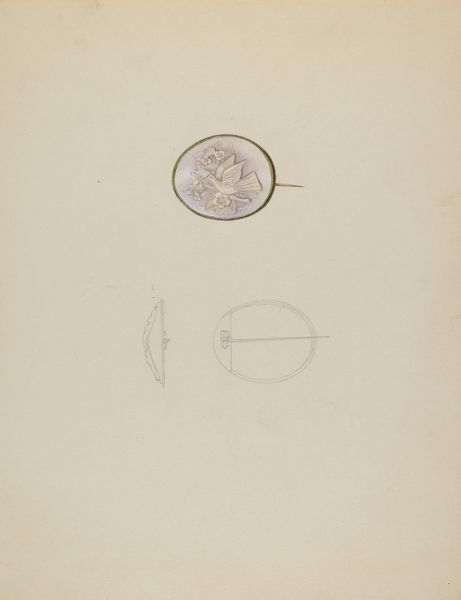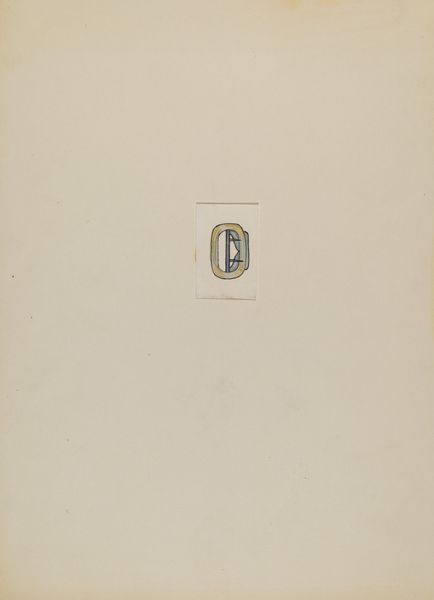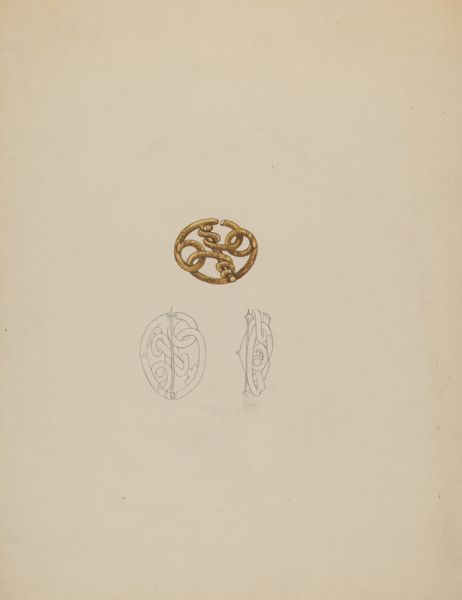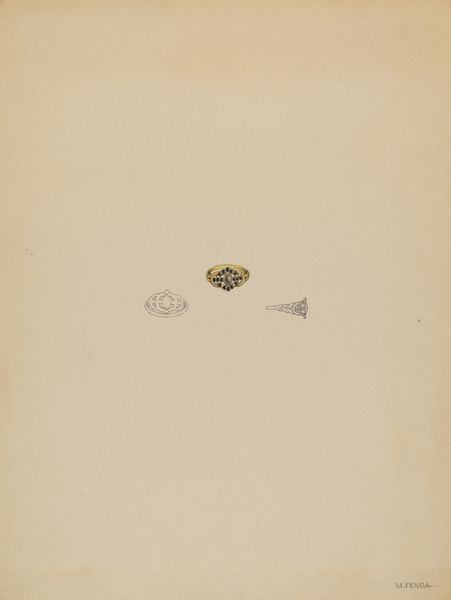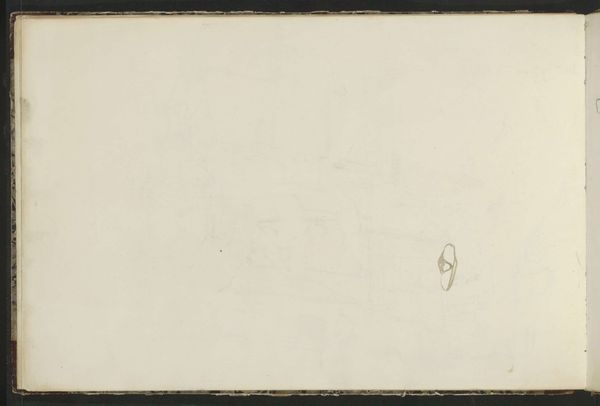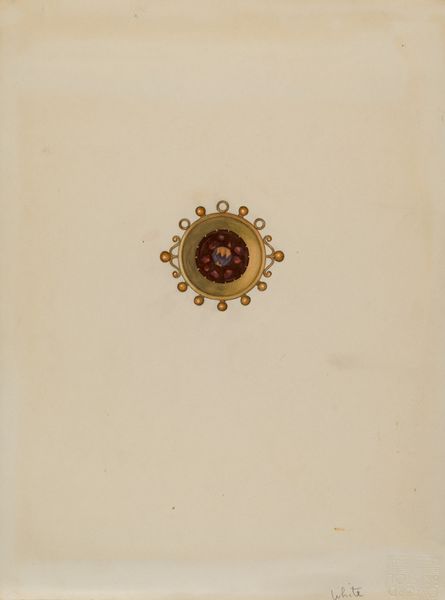
drawing, paper, pencil
#
drawing
#
paper
#
pencil
Dimensions: overall: 29.7 x 22.9 cm (11 11/16 x 9 in.)
Copyright: National Gallery of Art: CC0 1.0
Editor: Here we have Gladys Cook’s "Brooch," made around 1936, a delicate rendering in pencil and paper. The image seems so small, almost swallowed by the paper; I’m struck by how minimal it is. What can you tell me about it? Curator: Focusing on its materiality, it's interesting how a drawing of a brooch, a decorative object meant for adornment, is itself created through a seemingly simple, readily available technology. What social factors shaped the choice of pencil and paper over, say, actual metalwork at that time? Consider also its role in relation to high art versus craft – how did economic realities influence such distinctions? Editor: That’s a fascinating perspective! I hadn't considered the implications of the chosen materials in terms of social factors. Was Gladys Cook challenging those boundaries intentionally, or perhaps just working with available means? Curator: The question of intentionality is tricky, but what IS evident is how this work brings to the fore issues of production. What kind of labor went into this drawing versus crafting an actual brooch? The accessibility of drawing, using such basic tools, highlights different kinds of value: the preciousness of the imagined brooch versus the more modest materials needed to represent it. Do you notice any signs of labor? Erasures? Redrawn lines? Editor: Now that you mention it, the detail work around the oval looks very careful and precise, but it also appears to be reworked in certain areas, yes. So, we might infer a deliberate process and not just a quick sketch. Curator: Exactly. And that tension—between the aspiration toward fine craftsmanship represented in the brooch itself, and the humble act of its representation on paper, reveals underlying material and social dynamics in the art-making process. Editor: I’m definitely seeing the artwork differently now! Examining the materials and means of production really opens up new avenues of understanding. Thanks so much for your insight. Curator: It’s crucial to question and analyze art, going beyond surface aesthetics and probing the tangible elements and societal conditions which brought the work into being. It truly makes art history come alive.
Comments
No comments
Be the first to comment and join the conversation on the ultimate creative platform.
